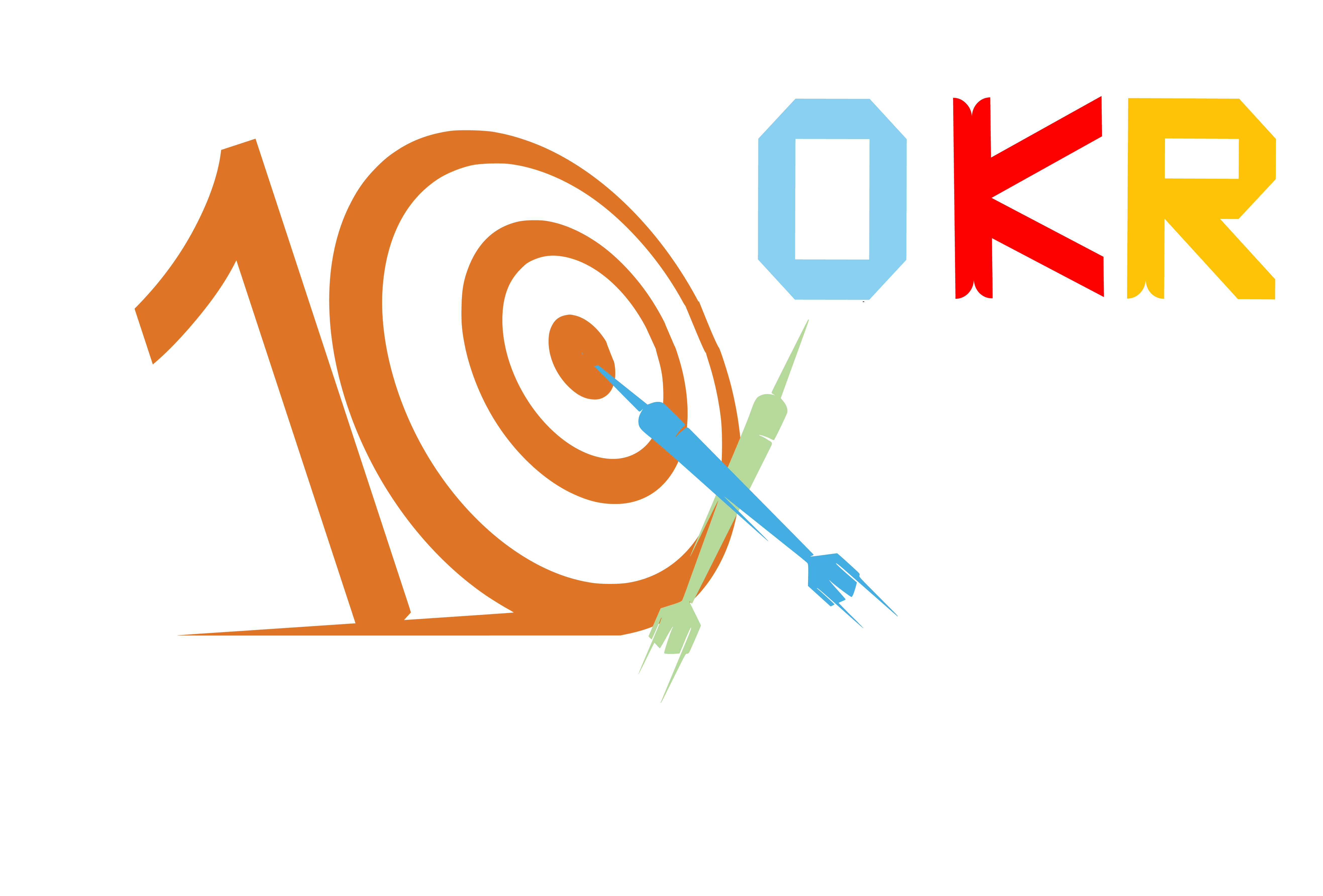Table of Contents
How to Set Goals with OKR Effectively?
Any strategy for professional or personal growth must include goal-setting. However, more than setting goals is needed. Measuring the progress towards achieving those goals is equally important.
This is where OKRs come in!
Objectives and Key Results, or OKR, is a framework for establishing and evaluating goals. Companies, organisations, and individuals widely use the OKR framework to make their goals more measurable.
The OKR framework was first introduced by Andy Grove, co-founder of Intel, and has since been adopted by some of the most successful companies in the world, including Google, LinkedIn, and Twitter. OKRs are useful for businesses of all sizes because they give explicit and quantitative ways to create and achieve goals.
OKR is designed to help teams stay focused on the most important goals, break down large goals into smaller ones, measure progress, and celebrate successes along the way. Setting quantifiable goals ensures that everyone is working towards the same target and keeps everyone on the same page.
Benefits of Using OKR for Goal Setting.
OKRs offer several benefits over traditional goal-setting methods. One of their primary assets is their capacity to harmonise individual aspirations with organisational objectives. By setting goals aligned with the company’s vision and mission, employees are more likely to feel engaged and motivated to achieve their goals.
Another benefit of OKRs is that they help teams and individuals set ambitious goals. Instead of setting goals that are easy to achieve, OKRs encourage setting stretch goals that push individuals and teams to go beyond their comfort zones, resulting in higher levels of achievement.
OKRs also provide a clear and measurable way to track progress towards achieving goals. By setting specific metrics and targets, individuals and teams can easily monitor their progress and adjust as needed. Finally, OKRs help promote accountability by making it clear who is responsible for achieving each goal
Understanding the OKR Framework
The OKR framework consists of two main components: Objectives and Key Results. Objectives are defined as the goals that an individual or team wants to achieve, while Key Results are the specific metrics or targets that will be used to measure progress towards achieving those objectives.
Objectives should be specific, measurable, and aligned with the company’s vision and mission. They should also be challenging and ambitious, pushing individuals and teams to go beyond their comfort zones.
Key Results should be specific, measurable, and time-bound. They should also be achievable but challenging enough to push individuals and teams to achieve their objectives.
Setting Stretch Goals with OKRs
Stretch goals are challenging and ambitious goals, pushing individuals and teams to go beyond their comfort zones. Setting stretch goals can be difficult, but it’s essential to achieving success.
When setting stretch goals with OKRs, it’s important to remember the following things.
- The goal should be aligned with the company’s vision and mission. This makes sure that everyone is pursuing the same objectives.
- The goal should be challenging but achievable. Setting goals that are too difficult can lead to frustration and demotivation while setting goals that are too easy can result in complacency.
- The goal should be specific and measurable. This makes it easy to track progress towards achieving the goal and make adjustments as needed.
- Finally, the goal should be time-bound. A task completion deadline instils a sense of urgency and guarantees that everyone works on the same schedule.
Setting Goals with a Time-Bound Approach
Setting goals with a time-bound approach is essential for achieving success. A time-bound process involves placing a deadline for achieving a goal and creating a plan to reach that goal within a specific timeframe.
The following considerations should be made when defining goals with a time limit.
The deadline should be realistic and achievable. Setting an unrealistic deadline can lead to frustration and demotivation.
- A plan outlining the steps needed to achieve the goal within the specified timeframe should be created. This strategy needs to have clear dates and milestones to ensure the goal is being reached.
- Progress towards achieving the goal should be regularly monitored, and adjustments should be made as needed. This ensures the goal is on track to completion within the specified timeframe.
Setting OKRs for Organisational Goals
The beauty of OKRs is that they allow organisations to set ambitious and aspirational goals while providing a clear roadmap for achieving them. By setting stretch goals that are both challenging and achievable, teams are motivated to push themselves to reach new heights.


But setting OKRs is about more than just coming up with lofty goals. It’s about creating a culture of accountability and transparency. When everyone in the organisation is aligned around the same goals and clearly understands how they will contribute to achieving those goals, it creates a sense of ownership and responsibility.
OKRs are essential for any organisation that wants to achieve exceptional results. Organisations can unlock their full potential and achieve their most ambitious objectives by setting stretch goals that challenge and motivate the team and creating a culture of accountability and transparency.
Setting Team OKRs for Teams and Individuals
When setting team OKRs, involving everyone in the process is important. This means holding team meetings where you discuss the company’s overall goals and how each team can contribute to achieving them. From there, each team can set objectives and key results aligning with the company’s goals.
It’s important to remember that each team’s OKRs should be challenging and achievable. If the goals are too easy, they won’t push your team to excel; if they’re too difficult, your team may become overwhelmed and disengaged.
In addition to team OKRs, it’s also important to set individual OKRs. This ensures that everyone on your team works towards the same goals and is held accountable for their contributions.
It’s crucial to take into account each team member’s specific workload, as well as their strengths and limitations while establishing individual OKRs. You want to set challenging and achievable goals within a reasonable timeframe.
Setting team OKRs for teams and individuals is a powerful way to drive results within your organisation. It keeps everyone aligned and working towards the same goals and ensures that your team constantly pushes themselves to achieve more.
Making Your Goals Measurable with OKRs
The OKR framework involves setting objectives, which are clear and specific goals that you want to achieve. Objectives should be ambitious yet achievable and represent stretch goals that challenge you to push beyond your comfort zone.
Once you have set your objectives, you must identify the key results that will indicate progress towards achieving those objectives. Key results should be specific, measurable, and time-bound, clearly showing whether or not you are progressing towards your goals.
One of the benefits of using the OKR framework is that it helps to align everyone in the organisation towards a common set of goals. It is simpler to monitor progress and ensure that everyone is heading in the same direction when focused on the same goals.
Additionally, the OKR framework encourages transparency and accountability, as progress towards objectives is regularly tracked and shared with the team.


To make your goals more measurable with OKRs, it is important to ensure that your objectives are aligned with your overall strategy and vision. Your objectives should be specific, measurable, and time-bound, and they should represent stretch goals that challenge you to push beyond your comfort zone. Your key results should be clear, measurable, and time-bound, indicating whether or not you are progressing towards your objectives.
Conclusion – The Power of OKRs for Effective Goal Setting
In conclusion, OKRs are a powerful goal-setting framework that can help individuals, teams, and organisations set and achieve ambitious goals. By aligning goals with the company’s vision and mission, setting stretch goals, and making goals measurable, individuals and teams can achieve higher levels of success. By regularly tracking progress, engaging team members, and measuring success, individuals and teams can stay motivated and focused on achieving their goals.
Sign up for free to execute your goal-planning strategies starting today!



